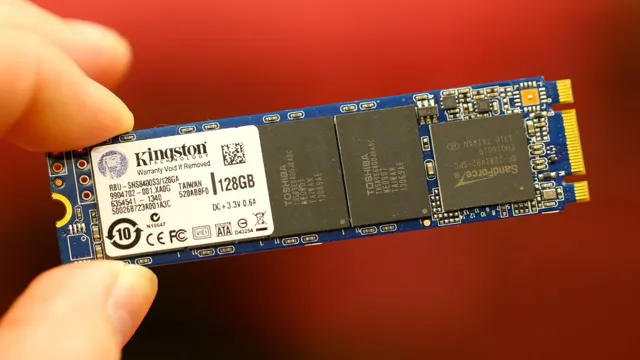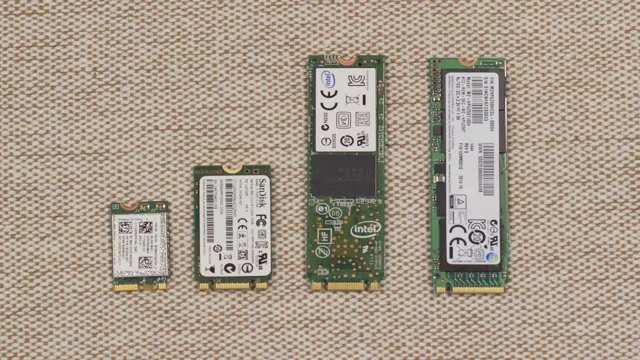Are you in the market for a new M.2 SSD but feeling overwhelmed by the options? Don’t worry, you’re not alone. With so many varieties available, it can be challenging to choose the right one for your needs.
That’s why we’ve put together this guide to help make the selection process easier. Think of it like choosing the perfect pair of shoes – you want something that fits well, performs well, and looks good too. Let’s dive in and explore what to consider when selecting the right M.
2 SSD for you.
Speed and Performance
When it comes to choosing the right M.2 SSD, it’s important to consider its speed and performance. M.
2 SATA SSDs are popular for their affordability, but if you want higher speeds, you should opt for M.2 NVMe SSDs. These SSDs have a quicker data transfer rate due to their PCIe connection, which enables them to read and write data at an incredibly fast pace.
But, you should also consider the read and write speeds of the SSD, which is measured in megabytes per second (MB/s). When it comes to read and write speeds, a higher value means faster performance. Other essential factors to consider when choosing your SSD include storage capacity, durability, and brand reputation.
So, if you’re asking yourself which M.2 SSD to buy, carefully weigh each of these factors to make an informed and beneficial decision.
Read and Write Speeds
When it comes to electronic devices, read and write speed can have a significant impact on performance. The read speed refers to the amount of time it takes for the device to access or load data, while the write speed reflects how quickly data can be written onto the device. Faster read and write speeds lead to quicker response times and faster transfer of data.
However, slower speeds can cause delays, making the device slower and less efficient. For example, when copying large amounts of files onto a slow USB drive, the transfer can take a considerable amount of time, whereas a faster drive will transfer the same amount of data in much less time. Therefore, when selecting a device, it’s important to consider read and write speeds to ensure the best possible performance.

Sequential vs Random Performance
When it comes to computing, speed and performance can make a huge difference in your overall experience. Two terms commonly used when discussing storage performance are sequential and random performance. Sequential performance measures how quickly data can be transferred in a linear, sequential order, such as large file transfers or streaming video.
On the other hand, random performance measures how quickly data can be accessed in a non-linear, random order, such as launching applications or searching for specific files. While both types of performance are important, the type you need depends on your usage habits. If you frequently work with large files, sequential performance may be more important to you for quick transfers.
However, if you find yourself frequently multitasking and accessing various files and applications, random performance may be what you need for a smoother overall experience. Ultimately, it’s all about finding the balance of both for your individual use case.
Capacity and Price
When deciding which M.2 SSD to buy, there are a few factors to consider, and capacity and price are two of the most important. Capacity refers to the amount of storage space on the SSD, which is measured in gigabytes (GB) or terabytes (TB).
It’s important to choose an SSD with enough capacity to meet your needs, whether you’re using it for gaming, video editing, or other demanding tasks. As for price, SSDs can range from budget-friendly options to high-end models. It’s important to find a balance between capacity and price when making a decision, and to consider the long-term value of a higher-quality SSD.
In general, it’s worth investing in a higher-end SSD if you plan to use it for several years, as it will likely provide better performance and reliability. So, consider your needs and budget carefully when choosing an M.2 SSD, and don’t be afraid to do a bit of research to find the best option for you.
Determining Your Storage Needs
When it comes to determining your storage needs, two critical factors to consider are the capacity and the price. Capacity refers to how much data your storage device can hold, and it’s important to choose a capacity that meets both your current and future needs. It’s often a good idea to opt for a higher capacity than you think you’ll need to avoid running out of space too quickly.
As for price, the cost of storage devices will vary based on the capacity and other features. It’s essential to do your research and compare prices to find a device that meets your needs and budget. Remember, the cheapest option may not always be the best one for you if it doesn’t meet your capacity or performance requirements.
It’s important to strike a balance between the two to get the most value out of your storage device.
Examining Price vs. Performance
When it comes to choosing the right storage capacity for your device, price is always a consideration. It’s important to find a balance between capacity and cost, especially if you’re on a budget. Generally, the higher the storage capacity, the higher the price.
However, you don’t always need the highest capacity if you’re only using your device for basic tasks like browsing the internet and checking email. On the other hand, if you’re a professional photographer or videographer, your storage needs will be much greater. In this case, it may be worth spending more to get a higher capacity device that can handle your workload without slowing down.
It all boils down to your specific needs and budget. Remember to evaluate the price vs. performance before making a decision on storage capacity.
Compatibility and Interface
When it comes to buying an M.2 SSD for your system, compatibility and interface are important factors to consider. Firstly, you need to determine whether your motherboard supports PCIe or SATA for M.
2 SSDs. This is crucial, as using the wrong interface can result in reduced performance or even damage to your hardware. Secondly, you need to check the key type of the M.
2 SSD, which determines how it can be connected to your motherboard. The most common key types are B+M and M, with the former compatible with both SATA and PCIe, and the latter used exclusively for PCIe. Additionally, it’s important to check the physical size of the M.
2 SSD your motherboard supports, as there are different lengths available. Doing your research and ensuring compatibility can make all the difference when it comes to choosing the right M.2 SSD for your system.
M.2 Interface Types
If you’re looking to upgrade your computer’s storage, you might have come across the M.2 interface. M.
2 form factors come in different types, such as SATA, NVMe, and PCIe. The type of interface determines the speed and compatibility of your M.2 drive with your motherboard.
The SATA M.2 interface is compatible with most motherboards, as it uses a traditional SATA III interface. The NVMe M.
2 interface provides faster read and write speeds, but it requires a motherboard with an NVMe-compatible M.2 slot. Lastly, the PCIe M.
2 interface provides the fastest speeds, but it’s the most demanding interface, requiring a PCIe x4 or higher slot. It’s important to check your motherboard’s manual to determine which M.2 interface type it supports.
In conclusion, while all M.2 interfaces provide faster storage options, choosing the right type of M.2 interface depends on the compatibility of your motherboard.
Matching M.2 Slots on Motherboard
If you’re building a new PC or upgrading your current one, you’ve probably heard of M.2 slots. M.
2 slots are small, rectangular slots on your motherboard used for storage devices such as solid-state drives (SSDs). However, not all M.2 slots are created equal – there are different lengths and key types that determine compatibility with your storage device.
M.2 slots come in various sizes, ranging from 2242 to 221 The number sequence refers to the length in millimeters, with 2242 being 22mm wide by 42mm long and 22110 being 22mm wide by 110mm long.
It’s essential to know which size your storage device supports before purchasing a motherboard with matching M.2 slots. The key type also plays a role in compatibility, with M.
2 slots having either B, M, or both B and M keys. M.2 devices with the B key will only fit into M.
2 slots with a B key, while devices with the M key will only fit into M.2 slots with an M key. However, M.
Brand and Customer Support
If you’re wondering how to choose the right M.2 SSD for your needs, the first step is to consider the brand and customer support. Look for renowned brands in the market that offer good support and after-sales service, because investing in reliable SSDs can save you from a lot of data loss headache.
It is also important to consider the read and write speeds of the M.2 SSD based on the application you’re using it for. If you’re a gamer or a content creator who needs faster write and backup speeds, then go for a higher read/write speed SSD.
If you’re looking for extended durability, then consider purchasing an SSD with good drive endurance since it determines the sustainability of an SSD. As each M.2 SSD has unique specifications, determine the ones that match your system’s requirements and the tasks you have planned for your SSD.
By researching online and making an informed decision based on your needs, you can avoid buying the wrong equipment and save time and money. So, always choose wisely!
Conclusion
In conclusion, choosing the right M.2 SSD can be a daunting task, but fear not! By assessing your storage needs, prioritizing speed, and comparing prices and features, you too can become an M.2 master.
Remember, just like a good wine, sometimes it’s not about the year, but the label. So, whether you end up with a Samsung 970 EVO or a WD Black SN750, trust your instincts and indulge in the sweet, sweet speeds of M.2 technology.
Happy shopping!”
FAQs
What is M.2 SSD?
M.2 SSD is a solid-state drive that is designed to fit in a small form factor. It is used in laptops, tablets, and other devices where space is limited.
What are the advantages of M.2 SSD?
M.2 SSDs are faster, more reliable, and consume less power than traditional hard drives.
What are the different types of M.2 SSD?
There are two types of M.2 SSD: SATA and PCIe. SATA M.2 SSDs are cheaper, but PCIe M.2 SSDs are faster and more expensive.
How do I know which M.2 SSD to buy?
Before buying an M.2 SSD, you should check the interface (SATA or PCIe), the form factor, the capacity, and the speed. You should also check the compatibility with your device.
